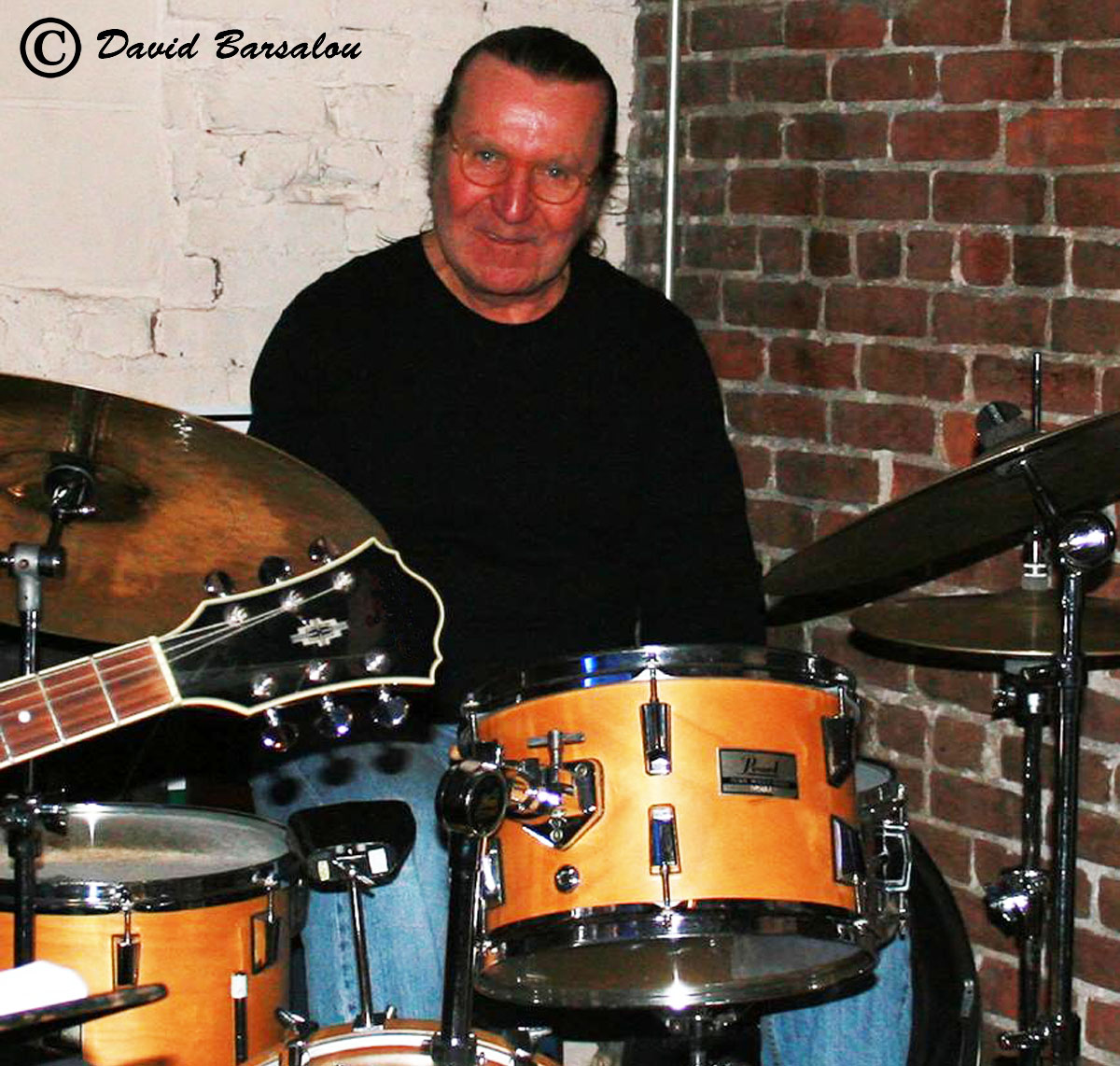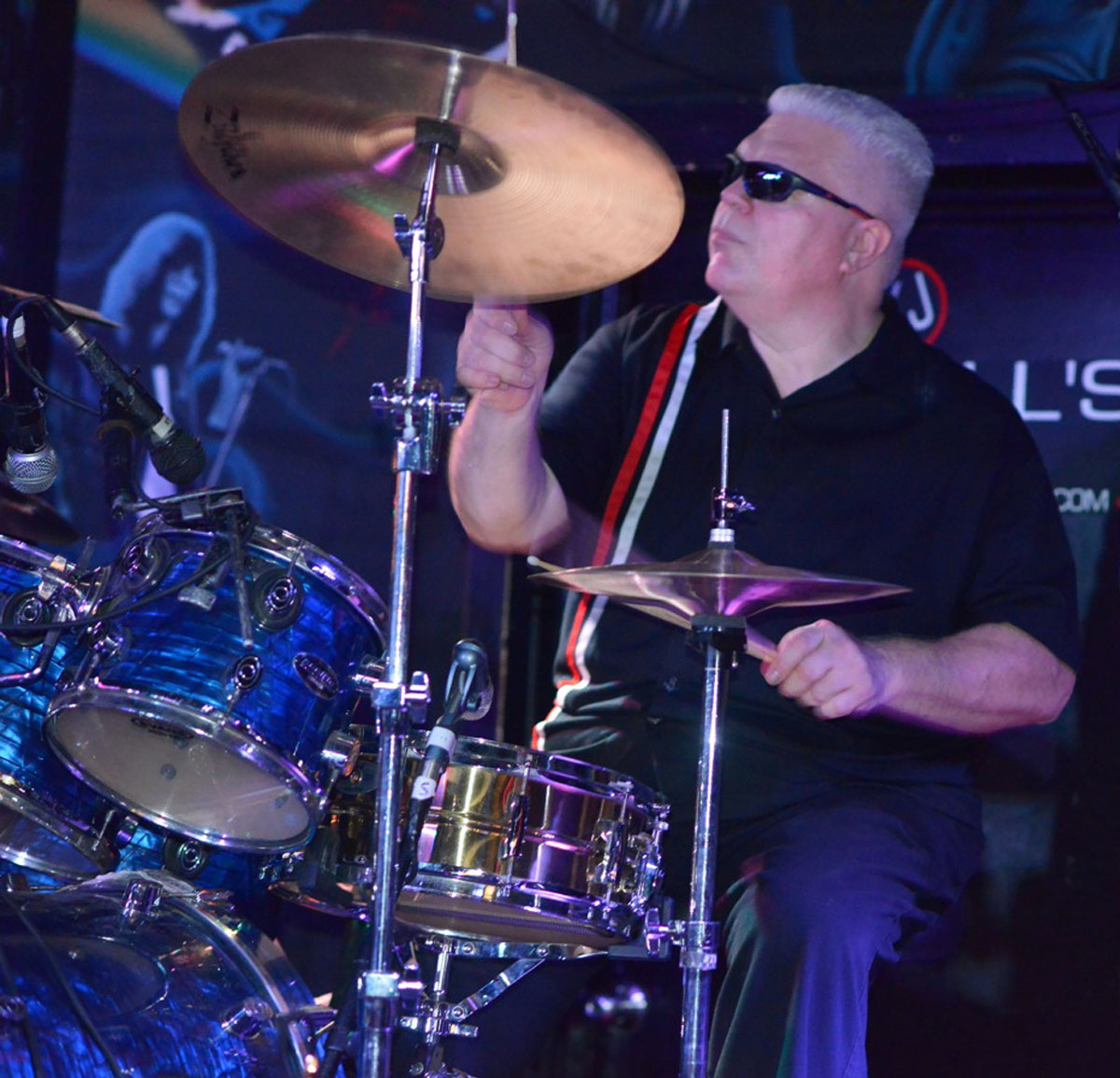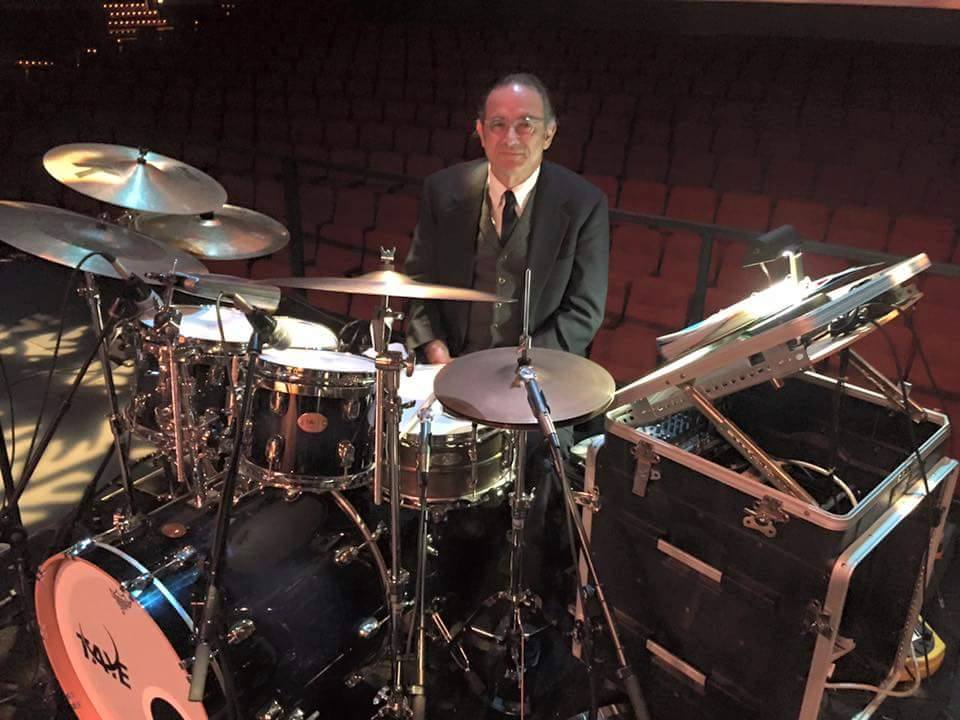Shelly Manne (1920-1984) - Historically important jazz drummer most associated with the ‘West Coast Jazz’ style. Shelly was so versatile that he also played on hundreds of Hollywood movie, and television soundtracks. While Shelly’s extensive discography is amazing. The list of musicians he has played, or recorded with is literally mind-boggling.
Not So Modern Drummer writer/columnist David Barsalou asked internationally recognized drummers John J R Frondelli, George Lawrence, and Chet Pasek to share their ideas and opinions on the following quote attributed to Shelly Manne:
Shelly Manne said...
"The ride beat is the easiest and the most difficult thing a drummer will ever play".
John J R Frondelli:
To paraphrase an old saying: Give a drummer a fish, and you feed them for a day. Give them a ride cymbal, teach them how to play it, and they’ll feed themselves for the rest of their lives.
Every part of the drum set has its own voice, and within those voices are many shades and subtleties, but none of them is more elusive than the ride cymbal. The legendary “Papa” Jo Jones is credited with transferring the timekeeping role of the bass drum to the ride cymbal over half a century ago. He used to tell a story about how drummers would come up to him and praise his ride cymbal sound, and he would actually give them the cymbal and tell them “If you learn how to play it, you can keep it”. His retort would be “I still have that cymbal”.
Let’s analyze this for a minute: What did Jo’s little experiment prove? It proved that no two drummers have the same touch on the ride cymbal. Of course, we can say that about the rest of the kit and ANY instrument, but the ride cymbal is the sonic signature of great jazz drummers. It’s an extension of their personality. The mellow, pinpoint precision of Joe Morello’s Paiste 602. The fiery attack of Tony Williams’ Istanbul K Zildjian. The airy shimmer of Shelly Manne’s “cool jazz” 22” A. Zildjian sizzle cymbal. Even moving up to the rock realm, with the jazz-influenced Ginger Baker’s uber-riveted 22” A. Zildjian heavy ride. The list goes on and on. By the way, Tony Williams insisted that there was no such thing as a “ride” (or crash) cymbal, and that the drummer was responsible for determining how it was used.
It’s not just the cymbal and stick, where the rubber meets the road. It’s the RIGHT cymbal, with the RIGHT hand, with the RIGHT attack and release, in the RIGHT place, with the RIGHT attitude and the RIGHT amount of swing that makes a GREAT, signature ride cymbal sound. It’s a sonic fingerprint, and no two are alike.
As sure as time marches on, drummers will ALWAYS pursue the “perfect” ride cymbal. Does that even exist? You decide.
George Lawrence:
Here’s my take on it, David. My deepest understanding of the jazz ride cymbal pattern happened when I found a copy of the first drum set instruction book ever written, Dixie Land Drumming by Ray Bauduc, which was published by Wm F Ludwig Sr. in 1937. It showed me where the ride cymbal pattern came from; how it evolved. It’s actually a New Orleans marching snare drum rhythm that was transferred to the ride cymbal.
Ray Bauduc was a highly respected and popular drummer on the national jazz scene during the early days of Dixieland and swing. He was an endorser of Ludwig Drums. He worked with many of the greatest jazz musicians from the early days of jazz like Bob Crosby and Jimmy Dorsey. He was musically educated and came from a family of pro musicians in New Orleans. He co-wrote several Dixieland hit songs in addition to the first drum set instruction book . He saw and influenced the development of jazz from Dixieland to swing then to bebop over the course of four decades. Ray bridged many gaps. He was a white New Orleans drummer who moved to New York and set trends with his aggressive, commanding but smooth drumming style. Like George Wettling, Gene Krupa and Chick Webb, Ray was directly influenced by Baby Dodds who is the most well known early drum set pioneer and who has influenced anyone who ever touched a drum set. Buddy Rich was an admirer of Ray Bauduc. In particular , he admired Ray’s “closed roll” which was a New Orleans thing that I see as the origin of the jazz ride cymbal pattern. This five stroke type closed roll was played in the one-two &- three-four & pattern; tap / buzz buzz tap / buzz buzz with accents on the first buzz that fell on the two and four back beats. The main reason I use Bauduc as a demonstration of this instead of earlier Dixieland players is because there is so much documentation of him playing the ride pattern on the snare drum and on the ride and Chinese cymbals.
There was no ride cymbal in the early drum set of the 1900s. There were splash cymbals, and Chinese cymbals, and sock cymbals on the floor that were played for accents and effect, and the occasional choked cymbal back beat, but no big ride cymbal or hi hats to play the ride pattern on. The bass drum played the quarter notes and “kept the beat” in Dixieland music while the snare drum played the ride pattern, which was a New Orleans marching band snare drum pattern. The bass drum also “kept the beat” in the swing era that followed in the thirties, but the snare drum pattern was transferred to the ride cymbal and the hi hat which had emerged by that time. Later, during the be bop era, the responsibility of “keeping the beat” was transferred from the bass drum to the ride cymbal, and the smaller be bop bass drums were freed up to play syncopated patterns, drop "bombs" and interplay in rhythmic conversations with the toms and the snare.
If you look at this video you can see Bauduc playing the ride pattern with both hands on the snare for most of the song then playing it with his right hand on the ride cymbal toward the end of the first song. In the second song he switches back and forth many times between riding the snare and riding the snare. So these videos were shot during the time when Swing music was being developed and the ride pattern was transitioning from the snare drum to the ride cymbal. This is a video of a film that is rare evidence that the jazz ride cymbal pattern was derived from the New Orleans “closed roll” pattern on the snare drum, of which Bauduc was an authentic practitioner.
What I “got” from this history lesson when I discovered the book many years ago was that the ride pattern rhythm drives the band, leads the band, conducts the band, etc., whether played on the snare or the cymbal. Much like the snare drum playing a cadence in a marching band, it is the driving force in traditional Dixieland, swing and bebop jazz. Iplay mostly rock, pop, funk and country music for a living here in Nashville and out on the road, but I was trained as a jazz musician at North Texas State University. My jazz sensibility carries over into rock, funk, fusion, even country music. I tend to lead every style with the ride cymbal or hi hat. I've been told by musicians I play with that I conduct the band with that right stick on the ride cymbal.
There are now so many interpretations of the jazz ride cymbal pattern, or even any kind of steady rhythm played on the ride cymbal. Every one plays it differently whether they understand its history or not. It has as much to do with the person's physical movements as it does their personality and their emotional and mental perception of what it should sound like. Some see the cymbal as a dominant, driving, foundation instrument. Some tend to let if float on top of the music and see it in a less commanding roll, subservient to the drums. To me, the cymbal is the timekeeper, not the bass drum, even in bass drum heavy music. I tend to play all four quarter notes in the jazz pattern evenly, without accents most of the time. I will dispense with the in between swing notes a lot and just play straight quarters, ala Tony Williams (gotta love Tony). A lot of drummers accent two and four. Many drummers make a big deal about the in between swing notes; what I call the “jump” note: the ands in the pattern. I consider the full shuffle pattern to be a variation of the jazz ride pattern. There is no one certain way to play it "right".
I played some concerts with Mose Allison. He said, "Here's the drum rap", and he asked me to not play the swing ride pattern. He said he wanted me to play “all ones; all points". He also asked me not to play the hi hat on two and four and not to play sidestick (OK, so unlearn everything I ever learned about playing jazz?). He explained that his music was authentic blues music and he didn’t want to hear the ride pattern in his music because it was a "square" gimmick used by white swing bands. He wanted constant propulsion not broken up by the in between notes. I disagree that the swing ride pattern is square, but playing pretty much straight quarter notes or a full shuffle pattern on Mose’s blues and jazz tunes did alter my perception of the ride pattern and broke me of being dependent on it. I now see the &s, the in between notes as exceptions to the rule. A “surprise” or syncopation to be thrown in sparingly, not continuously and monotonously on auto pilot.
Watch the video. I think it will have an effect on how you hear and play the ride cymbal pattern. This simple rhythm is steeped in history and took a hundred years to develop to this point, so get curious and investigate why so many well known drummers talk about how deep it is. Shelly Manne was known for his elegant and effortless playing of the ride cymbal pattern. You have to study him as well in order to “get it”. My favorite drummer is Elvin Jones. His ride cymbal playing was from another planet.
I’ve always thought that there are two purely American rhythms that have embedded themselves in our collective drumming psyche; The Bo-Diddley rhythm which became the most common funk beat, and the Dixieland closed roll marching, swinging closed five stroke roll rhythm which evolved into the jazz ride cymbal pattern. Ding dinga ding dinga ding dinga ding. Now, get off the computer and go practice. :-)
George Lawrence is a professional drummer in Nashville TN. and publisher/editor of Not So Modern Drummer. His bio: http://www.notsomoderndrummer.com/#/about-1/
Chet Pasek:
What I believe Shelly Manne meant in his quote about the ride beat is ‘the space in between notes’. The swing beat may sound easy and is pleasant to hear but the listener can tell if it swings and grooves.
The space in between notes depends on tempo. A slow tempo would have the note before the 3 and the 1 close: x.....x....xx.....x....x, (16th triplets), a medium-slow might be: x...x..xx...x..x, (16th notes), medium: x..x.xx..x.x, (8th triplets, probably most common) and fast x.xxx.xx (8th notes).
So its up to the drummer to LISTEN and make the song swing.
David, Thanks for asking.
Chet Pasek



